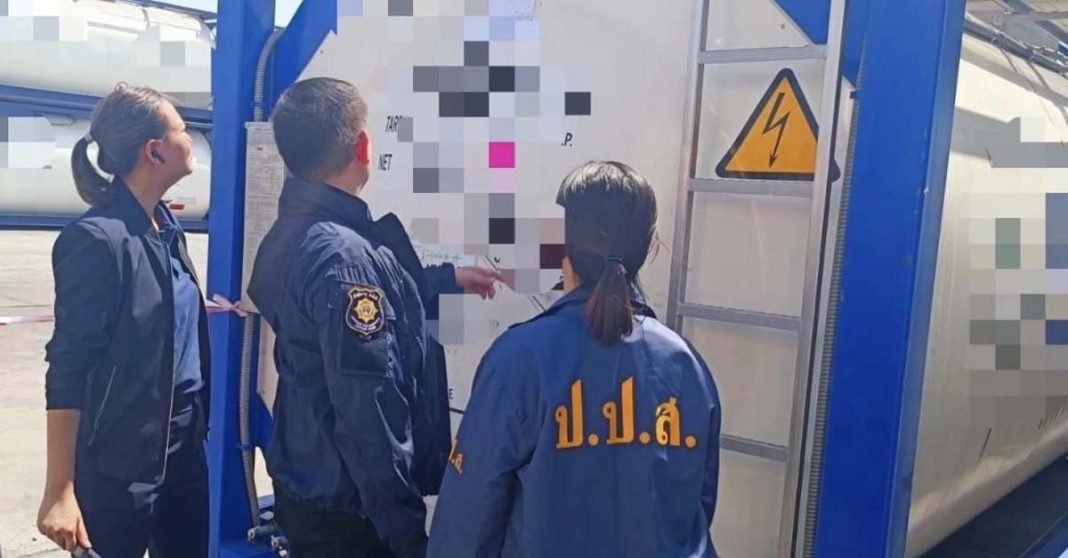Thai anti-narcotics and customs officials seized a total of 510.7 tones of aniline destined for Laos from a warehouse for dangerous chemicals in Laem Chabang deep-sea port in Chon Buri province last Wednesday.
Mr. Wichai Chaimongkhon, secretary-general of the Office of the Narcotics Control Board, revealed that the aniline was imported into Thailand by two logistic companies and was set to be exported by another logistic company to Laos.
The delivery was made in 22 tanks, without obtaining an import permit for category 3 dangerous substances, which led to the confiscation of the consignment of drugs.
Upon further investigation, Mr. Wichai found that the representatives of the logistic company in Laos had planned to use the aniline for producing cosmetics alongside their parent company in China.
According to Mr. Wichai, multiple logistic companies were involved in the transfer of the narcotics to Laos so as to provide flexibility and ensure efficiency in delivering the aniline to its intended destination.
He also instructed the director of the Narcotics Suppression Bureau, Mr. Prinn Mekanan, to work collaboratively with Laotian officials to investigate the Lao logistic company and verify the allegations made against them. The Royal Thai Embassy in Laos will also coordinate with the Office of the Narcotics Control Board in the country to carry out investigations and gather reliable information.
According to Wichai, aniline, in combination with other precursor chemicals, could be used to produce fentanyl, which is categorized as a Category 2 narcotic in Thailand. The amount of aniline that was confiscated could yield approximately 85,000 kg of fentanyl.
Fentanyl is a highly potent synthetic narcotic primarily used to alleviate chronic pain or terminal illnesses. It is capable of mimicking the pharmacological effects of opioids and can cause feelings of euphoria, sedation, and respiratory depression.
However, the harm of fentanyl lies in its potential for abuse and overdose. Illegally imported fentanyl and its analogs have contributed to the opioid epidemic in the US, resulting in thousands of overdose deaths each year.



